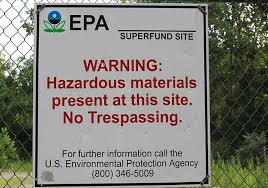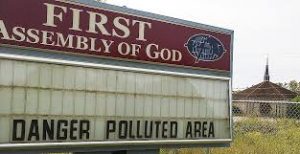
The Environmental Protection Agency has unveiled its plans to clean up the old site of the Lorraine and Wilcox Oil Refineries in Bristow.
The Agency announced it is proposing early action to address tank waste and lead additive source contamination at the refinery which was declared a Superfund Site. The action will allow the EPA to reduce risks to human health and the environment by remove the materials early in the Superfund process.
“This clean-up strategy takes permanent and effective, long-term prevention measures,” said Regional Administrator Anne Idsal. “Today’s proposed plan efficiently utilizes resources and addresses the highest risks first for Creek Co., OK.”
All excavated and treated source material will be transported to an offsite permitted disposal facility. This action will also prevent further contamination of the adjacent waterways, Sand Creek and the East Tributary, wetlands, stream and river bank areas.
The component of this action that addresses lead contamination is considered an interim action because only source material in the lead additive area is being addressed to a level that will be protective of on-site workers. Since the final risk assessment for lead has not been completed, the lead concentrations remaining after this action may not support residential use. Final site-wide remediation of lead and other risks posed by conditions at the site will be addressed in future actions.
The EPA consulted with the Oklahoma Department of Environmental Quality, Muscogee (Creek) Nation, Cherokee Nation, and Sac and Fox Nation to coordinate the review and discussion of this proposed action. A public meeting will be held to inform and solicit comments from community and other stakeholders on the proposed cleanup strategy on Tuesday July 10, 2018, from 6 p.m. to 7 p.m. at the Bristow Public Library, 111 West 7th Avenue, Bristow, Oklahoma, 74010.
Background
On May 22, 2017, EPA Administrator Scott Pruitt established the Superfund Task Force to provide recommendations for improving and expediting site cleanups and promoting redevelopment. On July 25, 2017, EPA’s Superfund Task Force released its recommendations, which included the use of early actions and adaptive management techniques. As the agency approaches the one-year anniversary of the Superfund Task Force’s recommendations, this plan expedites site cleanups by taking interim and early actions to address source material to remove the threat to human health and eliminate the future migration of contaminants.
On December 12, 2013, the site was added to the National Priorities List. The site, about 35 miles southwest of Tulsa, consists of the former Lorraine and Wilcox Refinery. The two companies operated refineries and associated facilities on the property from 1915 to 1965. The 140-150-acre site includes remnants of the former oil refining operations and tank farms. Contaminants at the site include metals—mainly lead—and polycyclic aromatic hydrocarbons, a group of chemicals found in crude oil.
News on 6 in Tulsa interviewed nearby residents and reported the following:







